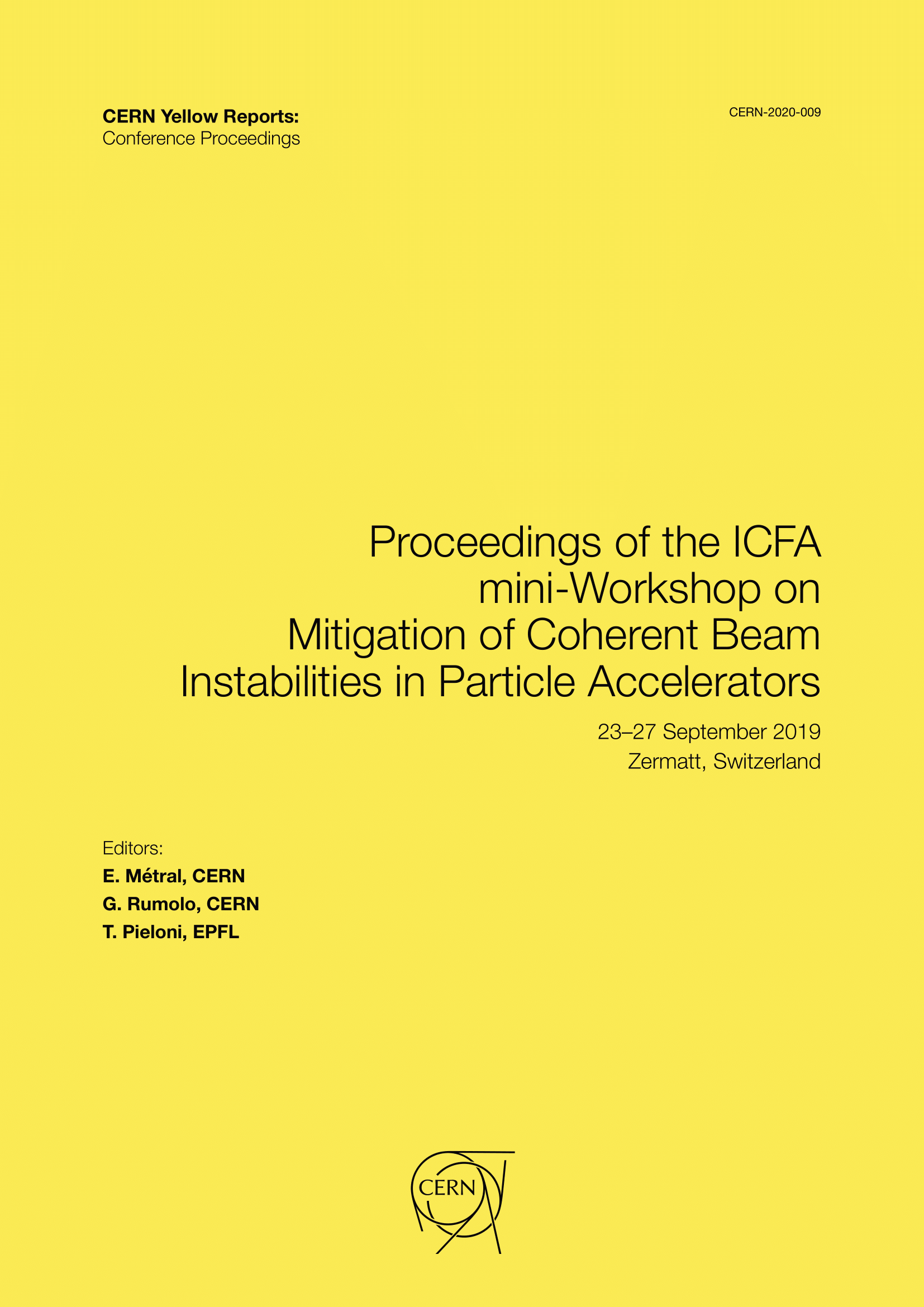Operational experience of beam stability control
DOI:
https://doi.org/10.23732/CYRCP-2020-009.33Abstract
The CERN accelerator complex, as well as other accelerator facilities world-wide, produce a large variety of particle beams for use in experiments. The beam quality is of prime importance and can be characterised by many parameters, such as beam or bunch intensity, longitudinal and transverse beam size, time structure, etc. Certain combinations of these beam parameters, along with the machine characteristics such as impedance, can lead to challenging configurations that can drive the particle beams unstable, potentially leading to degradation of the beam quality and particle losses around the circumference of the accelerator. These losses result in activation of the accelerator components and therefore prolong the cooldown time to allow for hands-on preventive and corrective maintenance, hence reducing the beam time available for physics.
Beam stability control is therefore of major importance for the operation of accelerators and can be obtained through distinct means for different accelerators and beam characteristics. This paper outlines the principal operational instability observations and mitigations applied for the CERN accelerator complex, complemented with approaches used in some other accelerator laboratories around the world. An attempt is made to illustrate the interplay between the beam dynamics experts and the operations teams.
Downloads
Published
Issue
Section
License
Copyright (c) 2021 CERN

This work is licensed under a Creative Commons Attribution 4.0 International License.
Authors who publish with this publication agree to the following terms:
- CERN retains copyright and publishes the work licensed under the Creative Commons Attribution License 4.0 that allows others to share the work with an acknowledgement of the work's authorship and initial publication in this series.
- Authors are able to enter into separate, additional contractual arrangements for distribution of the published version of the work (e.g., post it to an institutional repository or publish it in a book), with an acknowledgement of its initial publication in this series.
- Authors are permitted and encouraged to post their work online (e.g., in institutional repositories or on their website) prior to and during the submission process, as it can lead to productive exchanges, as well as earlier and greater citation of published work (See The Effect of Open Access).

